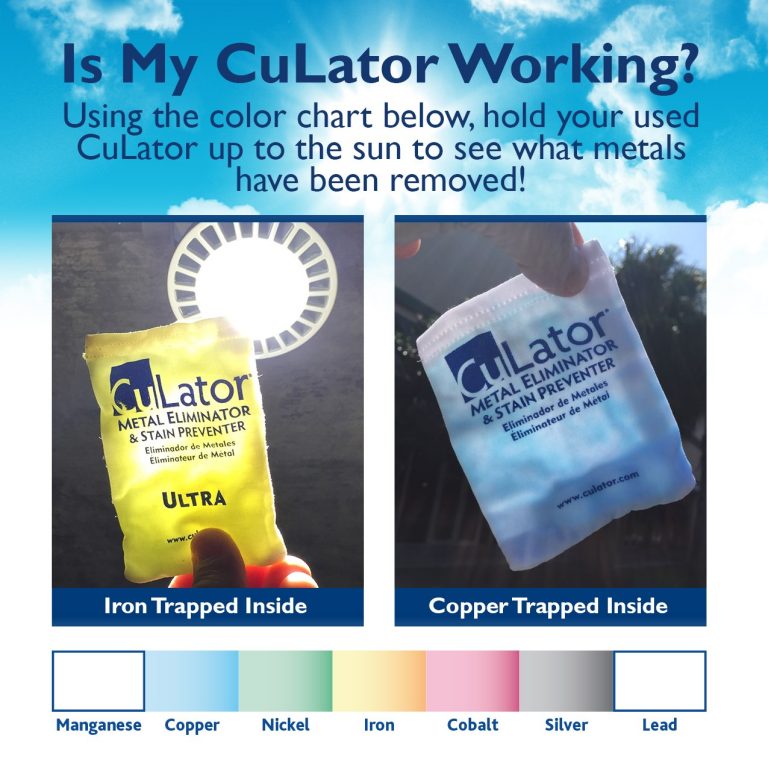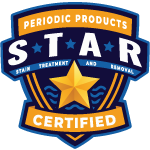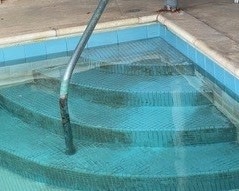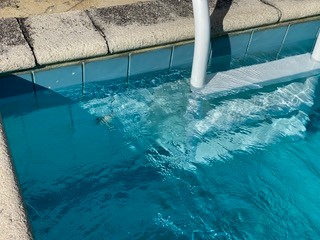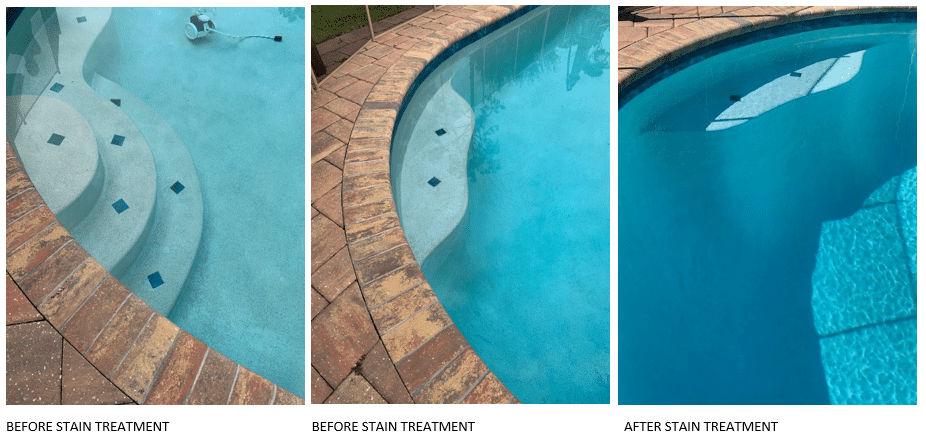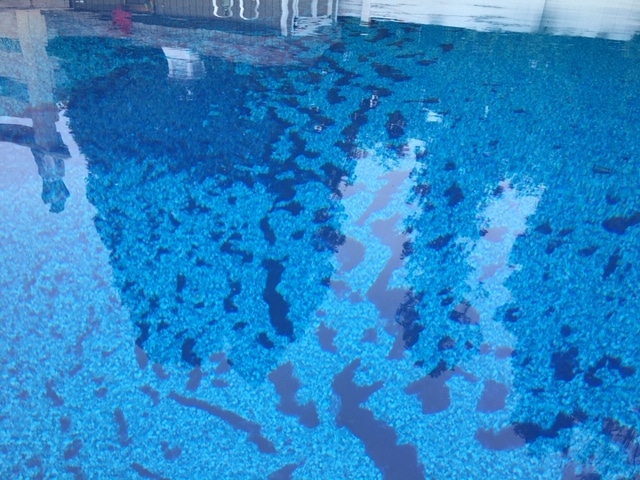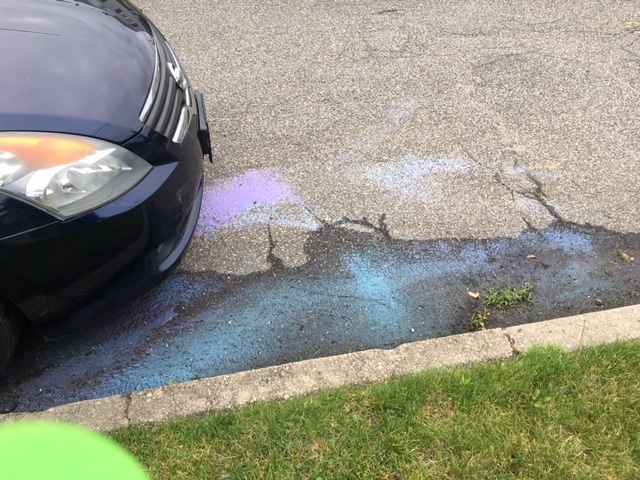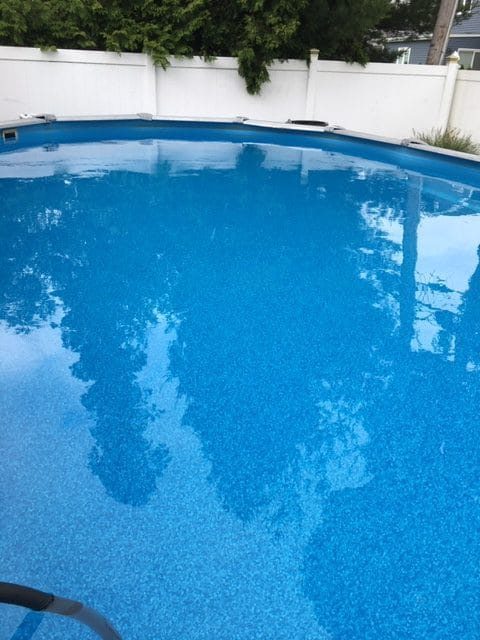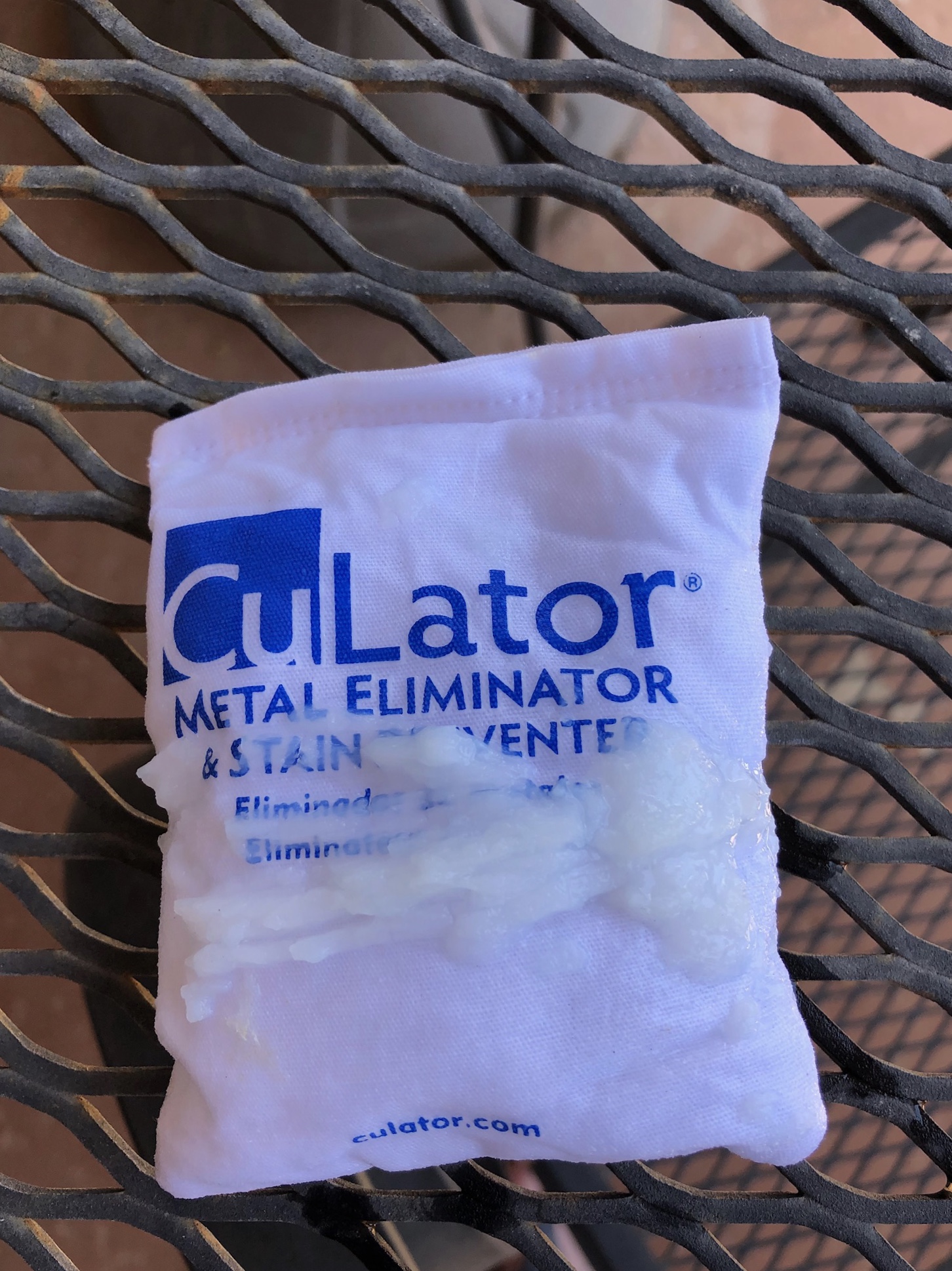Metals are naturally occurring substances found everywhere — in stone, soil and water. Rainwater, which is acidic, tends to dissolve the metals found in soil and stone, and carry them to groundwater and surface water, and thus on to hot tubs and pools when they are filled. This article will focus on methods to control the introduction of metals into pools and hot tubs, specific types of metal staining and the chemicals used to prevent and remove them. INTRODUCTION OF METALS TO POOL AND HOT TUB WATER While 91 metals exist in nature, only six (iron, copper, manganese, cobalt, calcium and magnesium) typically cause problems in pools and hot tubs. Here we will address iron, copper, cobalt and manganese. (Elevated calcium and magnesium concentrations, which can produce scale, were addressed in “Water Balance Indexes” June 2018 Tech Notes, page 55). Fill water (source water) typically contains metal contaminants, as nearly all municipal and well water supplies used to fill pools and hot tubs contain some metals, especially iron, copper, manganese and cobalt. For this reason, testing source water for metal concentration before filling the pool or hot tub is recommended. (See “Source Water and its Effects on Pool and Spa Maintenance” January 2020 Tech Notes, page 101.) While tests for iron and copper are readily available, most of these tests measure only the free form of the dissolved metal. Complexed or sequestered dissolved metals, along with suspended particles of oxidized metals, are typically not measured by these tests. In general, two-step total metal tests containing sufficient releasing or reducing agents measure free, complexed and some oxidized metals better than most one-step metal tests that only measure free dissolved metals. Please refer to manufacturer’s instructions. The majority of metals found in pool and hot tub water are introduced after the fill water has been added. These sources of metal contamination in pool water include stone water features, decking materials, plaster and pebble surfaces, chemicals, metal equipment, runoff and galvanic corrosion. Marble, flagstone and granite naturally contain iron and can leach into a pool after every rain. Copper may be introduced from heat exchangers found in gas-fired water heaters when water is not balanced. Copper-based algaecides and mineral-based water treatment systems will introduce metals. Lawn and plant fertilizers containing metals can enter the pool water through improper application or uncontrolled runoff. Irrigation systems using reclaimed non-potable water or well water are additional common sources of metal contamination. All of these sources can contribute to elevated metal concentrations in water, which can stain pool surfaces. Staining can be controlled with the proper and continual use of metal sequestering agents or by the removal of the dissolved metal from the water. Also, proper water balance prevents corrosion of surfaces and equipment that would contribute to metals in the water STAIN PREVENTION Remediation of Source Water – If source water is found to contain total metal concentrations greater than 0.2 ppm, remediation of the water is recommended prior to adding it to the pool or hot tub. Sediment filters (10 micron or less) can remove most of the larger oxidized metal particles. Treating water with filters containing metal adsorbents can reduce dissolved metal concentrations. Using untreated well water or other source water containing high levels of metal contaminants (greater than 1 ppm) should be avoided when filling or maintaining a pool or hot tub’s water level. Pool and Hot Tub Water Balance – The most significant factor in preventing the release of metals from pool and hot tub equipment and surfaces — and the most overlooked — is pH. Water with a low pH (less than 7) is acidic and likely corrosive. Acidic water can dissolve metals found in filtration equipment, heat exchanger and cementitious surfaces. Poor water chemistry will eventually damage the equipment and surfaces of any pool. Regularly measure and maintain the correct pH, alkalinity and hardness of the water. If the water does not contain enough calcium (hardness) or carbonate (alkalinity), it will draw the calcium and carbonate out of a cementitious surface, releasing metals naturally found in these materials into the pool water. Primary Sanitizer and Associated Stabilizer Levels – Maintaining proper primary sanitizer and stabilizer (cyanuric acid) levels is essential to controlling organic contaminants in pool and hot tub water. These organic contaminants include pathogens associated with recreational water illnesses; they can also include algae and non-hazardous bacteria (such as Thiobacillus ferrooxidans, Leptospirillum ferrooxidans and Gallionella ferruginea, collectively referred to as iron bacteria). Maintaining the correct concentration of active sanitizer reduces the need to add copper-based algaecides to the pool and hot tub water. Refer to the ANSI/APSP/ICC-11 2019 American National Standard for Water Quality in Public Pools and Spas for sanitizer and stabilizer guidance. Bonding of Metals and Water – Many pool and hot tub equipment components are fabricated from metal. Titanium is found in many electrolytic halogen generators and in the heater core of electric heat pumps. Copper is the primary component of the heater core found in gas-fired pool and hot tub heaters and is often used in decorative features such as spillways and water/ fire pots. Iron, chromium and nickel are found in the stainless steel used to manufacture ladders, handrails and light rings. For chemical and electrical safety, a bonding system is installed in the pool or hot tub. The system consists of copper wire connecting all the metal components and water together, thereby removing the differences in electric potentials. In the absence of a functional bonding system, metal components in contact with the water can dissolve or discolor, potentially destroying the equipment and increasing metal concentrations in the water. This process, known as galvanic corrosion, is enhanced in conductive solutions such as salt water and can also result from stray direct current (DC) in the water from such sources as telephone and alarm systems, DC power supplies, and electric transportation systems proximate to the pool or spa. While sacrificial anodes (like zinc metal) can be used to limit equipment damage, they do not address the cause of the corrosion, and the anode metal dissolves into the water. Bonding systems should be tested at least annually and any other time when corrosion is observed to ensure electrical safety and the ability to limit galvanic corrosion. Sequestering Agents – Sequestering agents are liquid solutions of soluble metal chelators and are added to pool water to temporarily protect pool surfaces. Sequestering agents work by bonding to the dissolved metals and limiting their oxidation. Although these chemicals are commonly referred to as “metal removers” by the industry, they only chelate the metals and do not physically remove them from the water. These agents have been used in the municipal water treatment industry for decades and require sophisticated ultrafiltration systems for the removal of the sequestered metal particles. The particle size is almost always too small to be effectively removed by pool filtration systems. Sequestering agents do, however, serve an important function in metal control. By combining with the dissolved metal ions, these chelators reduce the rate of metal oxidation by the sanitizer, thereby limiting surface staining. In a pool or hot tub, the agent is continuously destroyed by the primary sanitizer and secondary disinfection system. Thus, in addition to the regular treatment dose, frequent additional “maintenance doses” of these chemicals are required to keep the dissolved metals from oxidizing and staining the pool surface. Presently, there are only three reported ways to reduce the concentration of dissolved metals in pool and hot tub water: - Removing and replacing a portion of the water with fresh metal-free water;
- Filtering the water through a reverse osmosis (RO) system; or
- Using water-insoluble natural or polymer adsorbents to bind the metals.
REMOVING METAL SURFACE STAINS There are well-established procedures for removing metal stains from pool surfaces. These typically involve three steps: Step 1: Removal of the metal stain from the surface Step 2: Chelation of the dissolved metals in the water with a sequestering agent Step 3: Elimination of the metals from the water. Removal of the metal stains is done by adding ascorbic acid (vitamin C), citric acid, oxalic acid or a similar material to the pool water. Removal of metal stains with muriatic acid should only be done by an experienced pool service professional, as permanent damage to the pool surface could occur. Chelation of dissolved metals (Step 2) and methods of reducing dissolved metal concentrations (Step 3) have been previously discussed. Differentiating between metal stains and those caused by organic contamination is occasionally challenging. Obtaining a thorough history of the stain, evaluating water chemistry values and spot testing the stain with either ascorbic acid or citric acid may facilitate this assessment. Note: Some organic stains, like those caused by iron bacteria, “disappear” when treated with ascorbic acid, but return as soon as a chlorine residual is restored. OTHER METAL ISSUES · Biguanide-based sanitizers can react with iron and copper. · Dissolved copper can react with high levels of cyanuric acid to produce a characteristic purple surface stain or purple-colored water referred to as copper cyanurate. · Iron can interfere with ultraviolet (UV) disinfection systems. For systems producing UV light at 254 nanometers (UV-C), reducing iron levels in the water to below 0.2 ppm has been recommended by the United States Environmental Protection Agency. It is important to follow the manufacturer’s instructions regarding allowed levels of iron and other metals for proper system operation. | 

